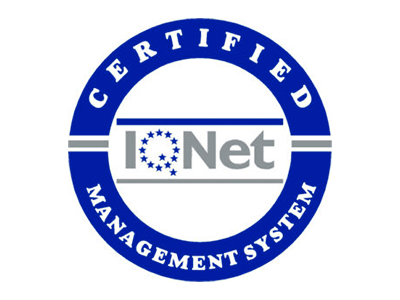Exploring the Possibilities: 8 Real-World Applications of Computer Vision
January 26th 2023

By harnessing the potential of computer vision, we can create smarter and more efficient solutions for our everyday tasks. Whether it’s helping medical professionals diagnose diseases more accurately or making our roads safer by powering autonomous vehicles, computer vision has the potential to revolutionize our lives. Let’s explore the possibilities of computer vision and see how it can help us tackle some of the most pressing challenges we face today.
What is Computer Vision?
In essence, it is the ability of computers to recognize and process images and visual data, allowing them to “see” and understand the world around them. This is done by programming computers to analyze images, understand their content, and use this data to make decisions. Many modern-day technologies, including autonomous vehicles, augmented reality, and facial recognition, rely on computer vision. The implementation of computer vision is expected to grow significantly in the coming years. According to Grandview Research, the computer vision market was estimated to be worth $12.2 billion by the end of 2021, growing at a CAGR of 7.3% to reach $20.05 billion by 2028.
Computer vision is often used in conjunction with other technologies, such as artificial intelligence and machine learning. Computer vision can be split into two sub-categories: image recognition and image understanding. Image recognition is the ability to identify objects in an image, such as recognizing a dog in a photo. Image understanding, on the other hand, is the ability to understand the context of an image, such as knowing that a dog in a photo is meant to represent a pet.
In the past decade, there has been a surge in the development and applications of computer vision. From facial recognition to 3D mapping, we can now harness the power of computer vision to accomplish a wide range of tasks.
Let’s take how computer vision is impacting different industries.
1. Industrial Automation
Industrial automation has been an early adopter of computer vision technology, with many businesses already utilizing it to improve operations. In industries such as automotive, computer vision can be used to detect defects in manufactured parts. This can help manufacturers to produce higher-quality products, improving overall profitability.
One example is the pharmaceutical industry. Computer vision has been used to improve the accuracy of the packaging process. Another industry that has seen a large amount of automation is the dairy industry. Computer vision has been used to detect when cows are in heat so that farmers know when to collect the milk. In all of these examples, industrial automation is benefiting from the use of computer vision technology to improve operations.
2. Autonomous Driving
Autonomous vehicles use computer vision to transform the driving experience. With the help of this technology, vehicles can detect their surroundings, navigate roads, and even avoid accidents. In fact, many autonomous cars rely heavily on computer vision. A number of big-name companies, including Tesla, Waymo, and Uber, are investing in this technology in order to develop autonomous vehicles. Autonomous vehicles have the potential to improve road safety, reduce traffic congestion, and significantly reduce greenhouse gas emissions, making them a highly desirable technology. While autonomous vehicles are currently legal in just a few countries, many expect this to change in the coming years.
3. Medical Diagnosis
Computer vision has the potential to transform the world of healthcare. By allowing machines to analyze images, identify abnormalities, and support diagnosis, computer vision can assist doctors in treating patients more effectively. Computer vision has already been used in a range of areas, including dermatology, oncology, and cardiology. For example, dermatologists are using computer vision to analyze moles and detect signs of skin cancer. This can help doctors to treat skin cancer at an earlier stage, leading to better outcomes for patients. Similarly, oncologists can use computer vision to analyze tumors and help doctors to select more appropriate treatments. Cardiologists can use computer vision to look at an electrocardiogram, which is a test used to diagnose heart conditions.
4. Security Systems
Computer vision has been widely used in the security industry, and it’s expected to play a key role in the future. One application of this technology is facial recognition. By monitoring and analyzing images of people’s faces, security systems can identify who is entering and exiting the premises. This helps businesses to identify important clients and keep out unwanted guests. Computer vision can be used to analyze other areas of security, such as the contents of a bag or the movement of people in a certain area. For example, computer vision can be used to detect if someone is trying to break into a car. Security systems are benefiting from the use of computer vision to monitor environments and identify threats.
5. Robotics
Robotics have been transformed by the implementation of computer vision. Through this technology, robots can see their surroundings, navigate around obstacles, and even interact with humans. It has been used in a range of different industries to enhance operations, from healthcare to agriculture. For example, computer vision has been used in surgical robots to assist surgeons with precise movements. Similarly, robots used in farming can detect the number of crops on a plant, allowing farmers to maximize their yield. In the future, robots will likely rely heavily on computer vision, as it will help them navigate environments, complete tasks more effectively, and reach a higher level of interaction with humans.
6. Virtual and Augmented Reality
Computer vision has been a driving force in virtual and augmented reality, allowing people to see, interact with, and manipulate digital objects in real-time. This technology has been used in a wide range of industries, including healthcare, education, and marketing. For example, medical students can use VR or AR to gain insight into surgery without putting a patient at risk. VR and AR are also being used to treat patients with mental health issues, such as anxiety or phobias. VR is also being used to help athletes train more effectively, enabling them to visualize and practice real-life scenarios. VR and AR are benefiting from the use of computer vision to create more immersive and interactive environments.
7. Social Media
Social media is benefiting from the use of computer vision to analyze content and identify key information. This technology has been used in platforms such as such as Instagram and Pinterest, to analyze images and identify key elements, such as what products are being used and where the image was taken. While social media companies are currently using computer vision for image analysis, it’s expected to expand in the future to encompass more areas of the platforms.
8. Education
Computer vision can be used in many areas of education, from kindergarten to university. This technology has been used in robots that can be controlled by children and can teach them programming skills. It has also been used in interactive books that can detect when a child is reading a certain page and provide them with additional information based on what they have read. Computer vision can support teachers in creating more engaging content and tailoring lessons to each student’s needs.
Conclusion
The possibilities of computer vision are truly astounding, and it’s only in its early stages By having the ability to develop an understanding of the physical environment, this technology has the potential to revolutionize the way we live, work, and interact with the world around us.
Find out how our computer vision solution can improve accuracy, boost employee efficiency, simplify workload, deliver innovative products, and enhance decision-making.
Ready to see what we can do for you?
In the right hands, artificial intelligence can take human performance to a hitherto unimaginable level. Are you ready for evolution?




